What Coral Taught Me About Heritage
Uncovering my culture one piece of jewelry at a time: A look at the history and significance of coral in Italy.
AN INSPIRATION CLOSE TO HOME
I’m always striving to create jewelry that holds deeper meaning. Pieces that tell a story, seeking inspiration through tales and myths of old. But recently, I found myself feeling disconnected from the things I usually turn to.
One day, I was scrolling through Pinterest and stumbled upon this remarkable portrait of an Italian woman adorned in a vibrant red coral necklace, titled “The Neapolitan Girl” by Hugues Merle. I was captivated by the woman in this painting, and needed to know more.
Digging deeper, I discovered an entire genre of portraits capturing ‘Italian peasant women’ all adorned in these charming red coral necklaces—many of them specifically attributed to women from Naples, a region close to where my grandmother once called home.
Knowing that my grandma came from peasant roots, the paintings became something I connected with. Their coral jewelry was alluring and assuredly a great source of pride and culture they could partake in, regardless of class status.
This sparked an idea: to start exploring my heritage not just through visual arts and travel like I had in the past, but through the jewelry I created and wore. For the first time in a long time, I felt inspired to make something new that felt important and honored my and my grandma’s heritage.


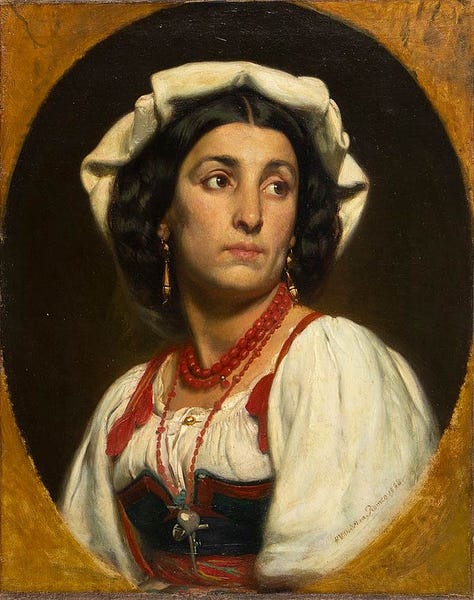
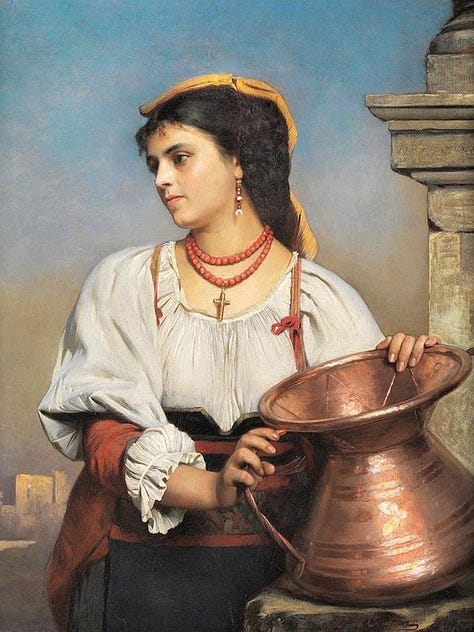


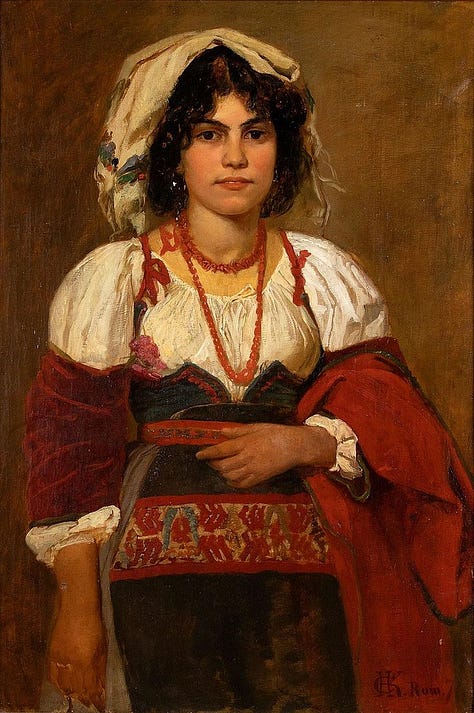

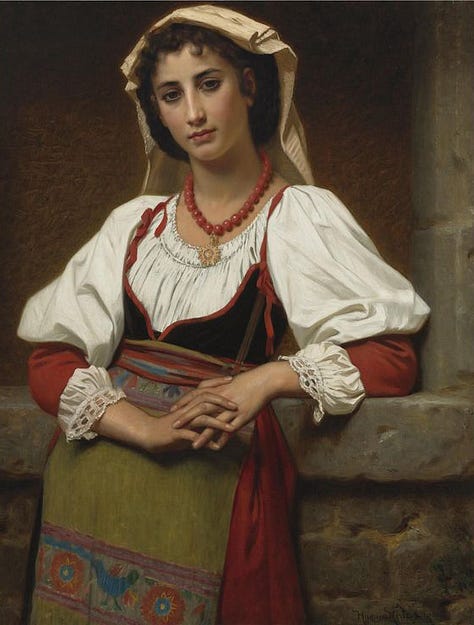
My maternal grandmother was originally from Italy, born in Santa Maria la Fossa, just north of Naples. She came from humble roots and a difficult upbringing, so she didn’t speak much about her childhood.
By the time I was old enough to know how to ask her the questions that mattered, she was already gone. The name of my jewelry brand, Aveta, comes from her maiden name. I’ve always felt a quiet pull to connect with my heritage, but it wasn’t until this year that the need became essential to my work as a jewelry designer.
THE SIGNIFICANCE OF CORAL
Coral jewelry has been discovered in Neolithic graves dating back as far as 12,000 years—so it's safe to say it has been treasured and worn for a very long time.
One of the most intriguing myths about coral’s origin comes from Ovid’s Metamorphoses, which attributes its creation to Medusa’s blood. After Perseus decapitates her, he places her head on a bed of seaweed, where her blood drips and mysteriously crystallizes, becoming coral.
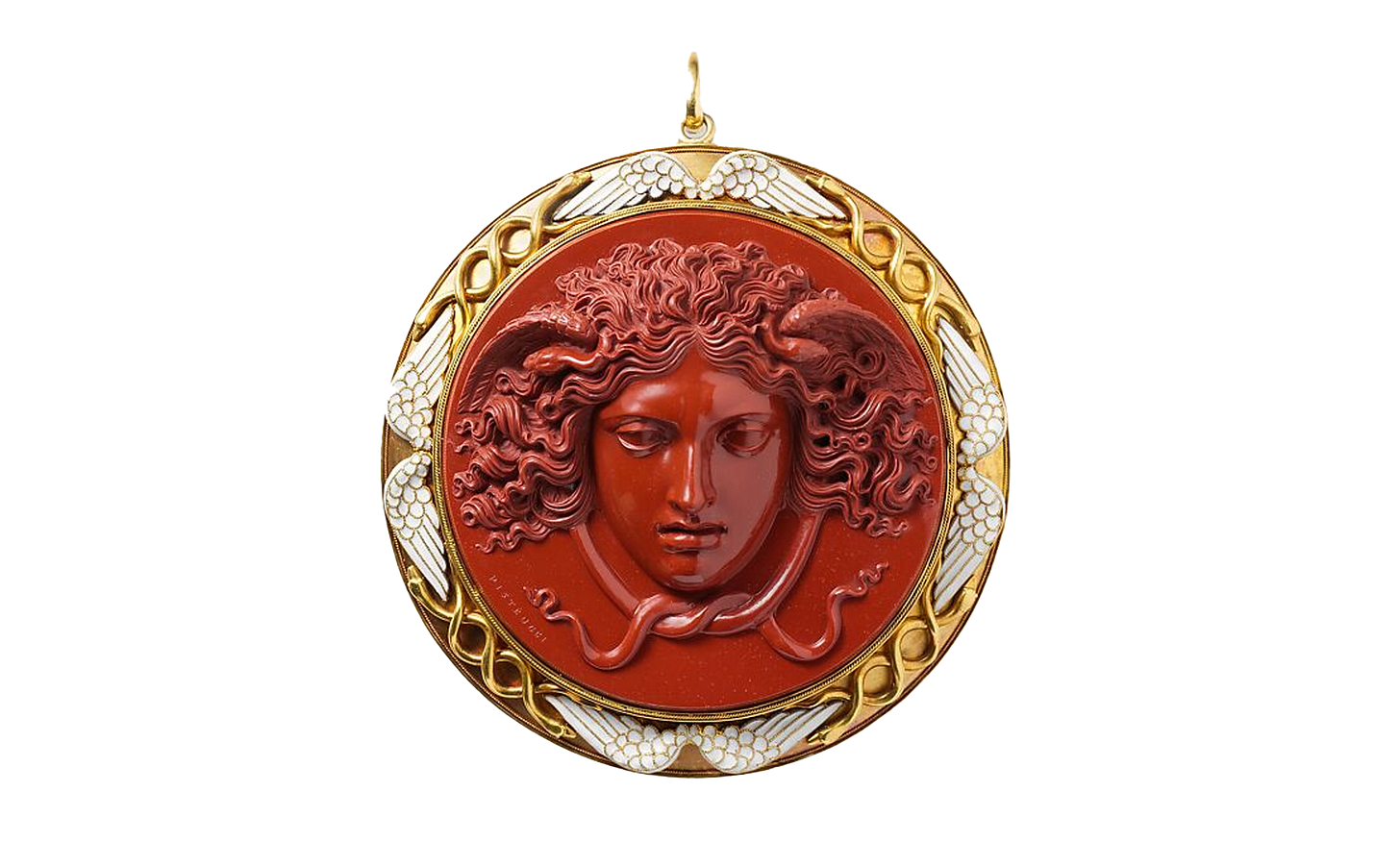
According to Pliny the Elder, a Roman philosopher from the 1st century CE, red coral was especially prized for its vibrant hue. Across Roman and Mediterranean cultures, it was believed to possess powerful talismanic and protective properties.
“Coral is white when underwater, but soon turns red when exposed to the air; it was formerly used for divination.” — Pliny the Elder, Natural History, Book 32, Chapter 11
Pliny makes a note on the color transformation of coral, which surely fascinated ancient observers and imbued coral with an even more mystical, magical element.
Parents would adorn their babies and young children with small branches or beaded strands of coral to guard them against illness, accidents, and the ‘evil eye’, or ‘malocchio’, which was a traditionally held belief that an envious or malevolent gaze could cause misfortune. The deep red color was thought to embody a life force capable of keeping harm at bay, and therefore used to combat any possible mal intent by others.
The protective symbolism of coral was so deeply rooted in Ancient Roman culture that the tradition of children wearing it continued well into the Renaissance and beyond. In the painting below, we see the Madonna holding the Christ Child wearing a beaded coral necklace, complete with a branch-shaped pendant.
People would also crush it into a powder to use for medicinal purposes, as it was thought to possess a wide range of healing properties, including indigestion and fertility.
By the 17th and 18th centuries, the Italian coastal town of Torre del Greco (just south of Naples) had become the global center for coral craftsmanship. Situated in the perfect location for sourcing high-quality coral, local craftspeople developed highly specialized skills in harvesting, carving, and polishing this highly sought-after material.
Around this time, coral jewelry became incredibly popular with not only the wealthy, who could afford to set it in gold and silver, but also became a common everyday amulet for the middle and lower classes, who would wear it as simple beaded necklaces.
The coral ‘corno’ or ‘cornicello’, a curved horn shape, now synonymous with Italian culture, became a popular gift for newborns and was widespread among the lower classes as a form of folk protection.

ETHICAL USE
While these days, it is unethical to use newly harvested coral in jewelry due to the slow-growing nature and over-farming of such an important part of our ecosystem, I’ve uncovered a few options that would achieve a similar vibe:
Red Jasper - Part of the chalcedony family, red jasper is an opaque microcrystalline variety of quartz.
Carnelian - A translucent variety of chalcedony from the quartz family, known for its warm orange hues.
Agate - Another stone variety from the chalcedony/quartz family, that often has a distinctive layered banding in varying reds but can also be found in shades of pink, purple, brown, gray, cream, and green.
Red Jade - A rare variety of jadeite or nephrite, which are both members of the jade family.
Or there’s always the option to shop vintage and antique coral.
DEVELOPING A NEW COLLECTION
Over the past few months, I’ve been designing and developing a collection of bracelets and necklaces using the traditional pearl stringing method.
Since stringing was a brand-new technique for me, I spent many hours experimenting with various closures and finishing methods. None of the readily available options felt quite right, so I decided to make my own using the wax carving method.
I wanted the clasp to echo the beauty and history of the Italian coast. My inspiration came from a style of ancient amphora called Nola, named after a city near Naples, furthering the connection. My goal was to evoke the feeling of uncovering a shipwrecked treasure, filled with these long-lost amphora, along with coral, pearls, gold, and silver relics.

FINAL THOUGHTS
Once I had my techniques for the stringing part sorted, it was time to make one last decision. I didn’t feel comfortable using new coral for my pieces, so I made a call to substitute them for carnelian, which holds a similar vibrancy and has that antiquated yet modern feel I’m always searching for.

As I sat stringing my first sample piece with these brilliant red gemstone beads, I imagined that I was making the necklace for my grandma. One that would have served as a protective amulet for her during her childhood, and one that she would be proud to wear.
It’s been a fascinating and challenging project, and I’m so excited to share the finished pieces once I’ve perfected the final designs. Until then, I hope you enjoyed reading about my first dive into a piece of my cultural history through jewelry.
Let me know in the comments what has inspired you from parts of your culture and how it has made its way into your work. I would love to chat about it!

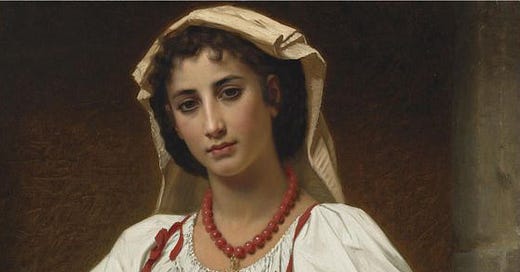




love this, I'm definitely going to have to make a carnelian strand for myself in this spirit! ❣️
Interesting! I’m from the south west part of the Netherlands, a province called Zeeland. Many women here used to wear coral jewellery in the past. We call it ‘bloodcoral’ because of the colour. How fitting that name is, hearing the origin story!
My grandmother gifted me a coral necklace when I was still in primary school. I didn’t care much for it then, but I wear it all the time now. It triggers so many lovely comments. Proud to wear it! So lovely you’re making a new (ethical) version of this jewellery. 👏🏽